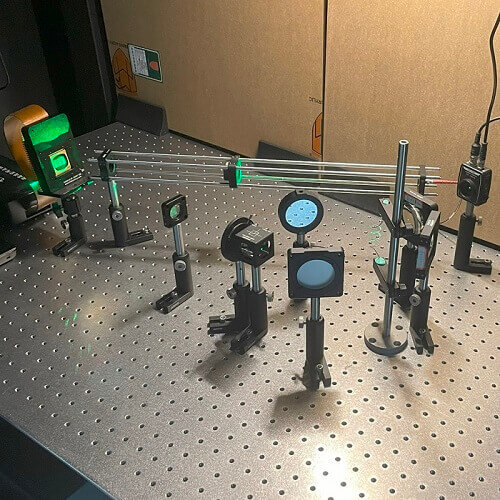BEIJING, July 4, 2024 — A research team at Tsinghua University has developed a new 3D method that can be used to track fast-moving objects. The real-time tracking approach based on single-pixel images could potentially be used to improve autonomous driving, industrial inspection and security surveillance systems.
“Our approach does not require reconstructing an image of an object to calculate its position, significantly reducing data storage and computational costs,” said Zihan Geng, research team leader. “Specifically, obtaining a 3D coordinate requires only 6 bytes of storage space and 2.4µs of computational time. Reducing computational costs and improving efficiency will lower the cost of the equipment needed for high-speed tracking, making this technology more accessible and enabling new applications.”
The researchers demonstrated tracking speeds that are more than 200 times faster than traditional video-based methods, and the tracking method does not require any prior motion information and can be performed with minimal computational resources.
The optical setup the researchers used to test their experiment. In their experiment, they used a digital micromirror device to achieve a tracking speed of 6667Hz with a modulation rate of 20kHz. Courtesy of Zihan Geng, Tsinghua University. Single-pixel imaging is a computational method that uses a single detector rather than a traditional pixel array to obtain measurements. Typically, a scene is illuminated with a series of patterns and the corresponding intensity values are measured with a single-pixel detector.
To create a more practical single-pixel imaging system for object tracking, the researchers implemented a non-orthogonal projection approach that is more efficient than the typically used orthogonal methods, which projects geometric light patterns onto two non-orthogonal planes to create 3D coordinates that are used to calculate the object’s position. Non-orthogonal projection also reduces the overall size of the system, making it easier to assemble and implement.
After validating their technique using simulations, the researchers carried out experiments using a single-pixel imaging setup that included a 532 nm laser for active illumination, a digital micromirror device (DMD) with a 20 kHz modulation rate to create the light pattern, and two single-pixel detectors to collect the light signal.
To test the tracking capabilities, the researchers moved a metal sphere with a hole in the middle along a curved, spiraling wire under gravity while illuminated with a pattern of light. They used the detector’s signal to calculate the object’s 3D position, and then used a rotation of the coordinate system to obtain the object’s calculated movement trajectory. With this approach, the researchers achieved a tracking rate of 6667 Hz with a DMD with a modulation rate of 20 kHz.
The researchers said the main challenge with the technique is that it can currently only be used to track a single object, but they are currently developing a way to track multiple objects in a single pixel image, which makes them excited about the potential uses of the technology.
“This technology could enhance the perception capabilities of technologies such as self-driving cars, improve security surveillance systems, and provide more efficient monitoring and quality control for industrial inspections,” Geng said. “In addition, this high-speed localization technology can also be used in scientific research, such as studying the flight trajectories of insects.”
This research was published in Optics Letters (www.doi.org/10.1364/OL.521176).

